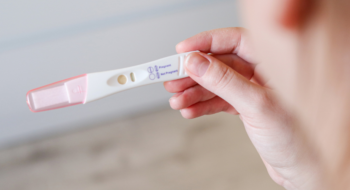Frank Drayton admits the eating habits he’s had most of his life didn’t set him up for success as he aged.
“You are what you eat, and you feel better when you eat the foods your body needs, not the junk,” Drayton says. “When you start gaining all that weight, it’s hard to get rid of it and you find excuses for why you should be eating junk or not exercising.”
At 86 years old, Drayton was facing serious health issues, including high blood pressure, and was at risk of developing type 2 diabetes. Then he found the Tidelands Health diabetes prevention program.
Featured Article
Diabetes prevention program graduates celebrate year of healthy transformations
Read ArticleAbout the diabetes prevention program
The 12-month program teaches participants how to make lifestyle changes that lower their risk of developing diabetes.
“The diabetes prevention program is a very vigorous program,” says Sharon Flagler, diabetes prevention instructor at Tidelands Health. “But we all lean on each other for support.”
The program provides education about healthy eating habits at home and in restaurants, encourages physical activity, teaches techniques for coping with stress and challenges and offers strategies for getting back on track if participants stray from those healthy habits.
Participants in the program who lose 5-7 percent of their body weight and add 150 minutes of exercise each week reduce their risk of developing type 2 diabetes by 58 percent, according to the Centers for Disease Control and Prevention.
The results
Drayton excelled in the program. He earned the coveted “biggest loser” title of his class for losing the most amount of weight, which he achieved in part through a healthier diet.
His ultimate goal by participating? Better health.
“The diabetes prevention program helps you stay out of the doctor’s office and off medications,” Drayton says. “I try to eat more natural foods so I can get to that point.”
While type 2 diabetes can be hereditary, eating well and exercising can reverse a prediabetes diagnosis, as well as lower your risk of a heart attack or stroke.
“It’s all about what you eat and how much,” Drayton says. “I still use sugar, but I don’t use as much. I’m learning how to cut back on stuff, and I’m learning how to eat better.”

Get involved
The Tidelands Health diabetes prevention program is offered at locations throughout the region to teach healthy habits and offer support as participants improve their health and delay or prevent the onset of diabetes. The program is especially important in a region with high rates of obesity and diabetes, Flagler says.
“It makes me feel so good that I am able to help them learn something – something that will help them with their health, something that they can take along with them,” Flagler says.
To be eligible to participate in the diabetes prevention program, you must have prediabetes, a high risk for developing prediabetes or been previously diagnosed with gestational diabetes.
“This program – and the way Sharon teaches it – keeps my mind on what I should do instead of focusing on all the things I’m doing wrong,” Drayton says. “Now I feel free.”





